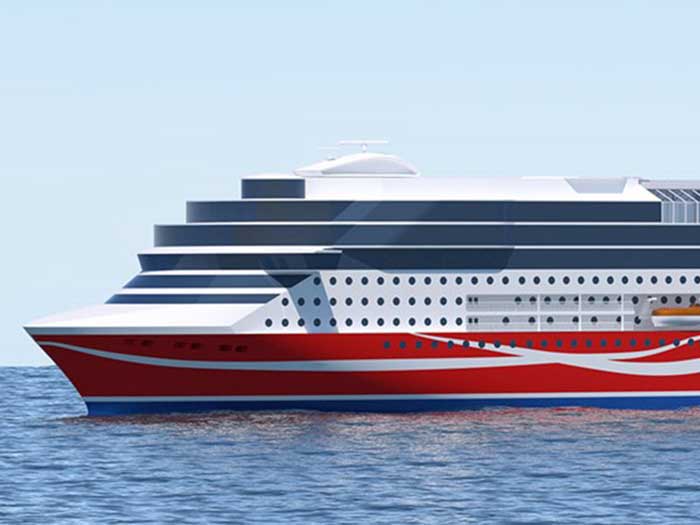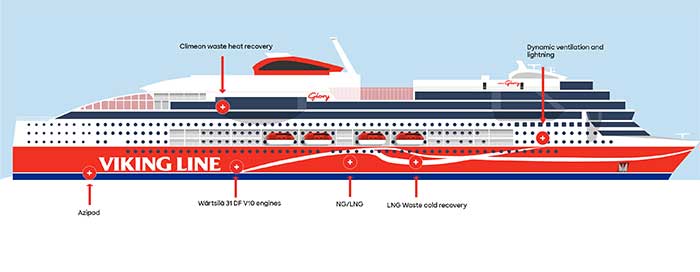
Viking Line newbuild is packed with climate smarts
Written by Nick Blenkey
Finland’s Viking Line says that its newbuild cruise ferry, the 63,000 gt M/S Viking Glory, will be one of the most climate-smart passenger ships in the world. It estimates that the ship, currently under construction at China’s Xiamen Shipbuilding will consume up to 10% less fuel than the 57,565 gt M/S Viking Grace, which is smaller and was hailed as the world’s most eco-friendly ship of its time.
Viking Glory will launch into service in 2021 and will be equipped with Wärtsilä 31DF dual fuel engines, which utilize the latest technology and run on completely sulfur-free liquefied natural gas (LNG). As with Viking Grace, Viking Glory will also have the ability to run on biogas, once it becomes a viable fuel alternative in the future.
“Viking Glory will have six 31DF engines for efficient optimization of fuel consumption. These engines have the lowest fuel consumption, but at the same time, the highest cylinder output in their segment (550 kW/cylinder),” saysProject Manager Kari Granberg, who is in charge of the new construction at Viking Line.
WASTE COLD RECOVERY
Viking Glory will also, in a world first, recover the waste cold from the use of LNG and recycle it for use in cold counters, cold rooms and other special rooms.
“Today, recovery of waste heat is already common, but to recycle waste cold for the purposes of refrigeration appliances and cold rooms is an innovative and highly climate-smart solution. Viking Line has carried out development work in collaboration with Wärtsilä, Projektia and Deltamarin,” says Granberg.
Additionally, Viking Glory will be equipped with a Climeon energy recycling system that harnesses and converts waste heat from the engines into electricity. The system can generate up to 40% of the electricity required for passenger functions. Additionally, a dynamic air conditioning and lighting system will be installed onboard, which will have a direct effect on energy consumption. This system will be controlled by the booking system: if a cabin remains empty at departure, it will be set in a power-saving mode, thereby minimizing air-conditioning and heating for that particular cabin.
According to Viking Line, this also marks the first time when a passenger ship of this kind utilizes the Azipod propulsion unit manufactured by ABB as a means of saving time and energy in terms of ship maneuvering: the system facilitates faster turns in the ports and a hull design with approximately 8% less water resistance than with a traditional propeller system.
“Viking Line endeavors to be a forerunner of responsible navigation, and this goal is reflected in the design and construction of our new ships. Those technological innovations we are now testing and developing jointly with our Nordic partners constitute the foundation for the novel cruise experiences through the archipelago,” says Gustaf Eklund, who is Head of Development at Viking Line and in charge of developing the concept for the new ship.
WHAT’S MISSING FROM THIS PICTURE?
Notably absent from renderings of the new ship just released by Viking Line: Two Norsepower rotor sails depicted in the initial renderings of the ship. The earlier ship, Viking Grace, delivered in 2013, was retrofitted with a rotor sail in April last year.





